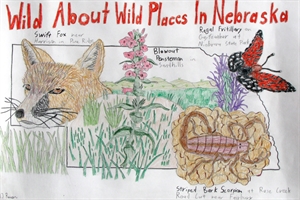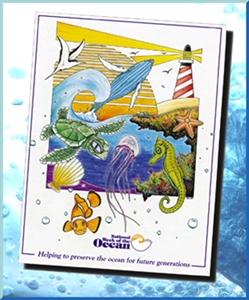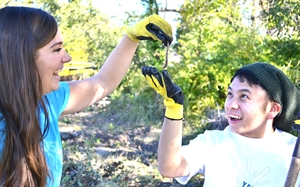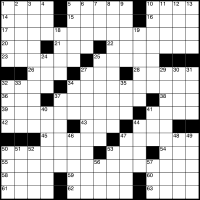Iditarod Race on March, 2025: What is the arrangement of sled dogs in and Iditarod race?
Iditarod Race 2025. The Iditarod Trail Sled Dog Race is an annual long-distance sled dog race run in early March from Anchorage to Nome.
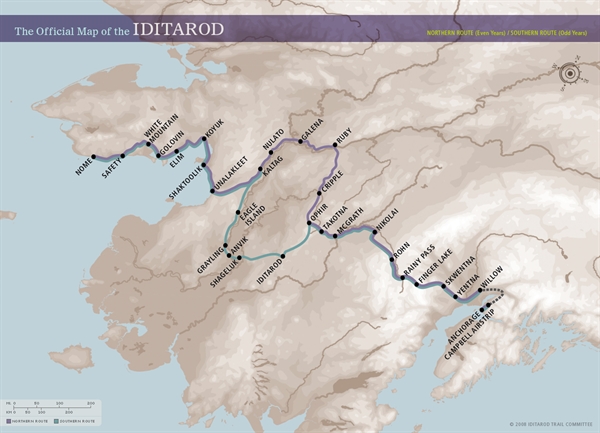
The Iditarod Trail Sled Dog Race is an annual long-distance sled dog race run in early March from Anchorage to Nome.
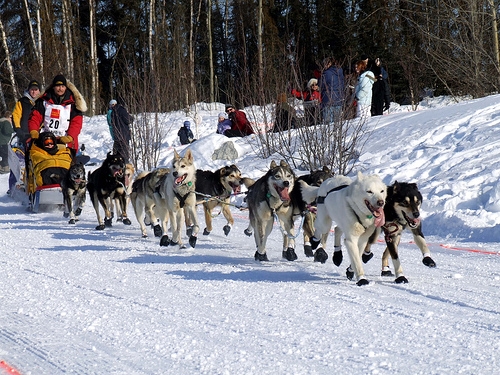
Iditarod Race Rules
The Iditarod Trail International Sled Dog Race shall be an open class race for all dog Mushers meeting the entry qualifications as set forth by the Board of Directors of the Iditarod Trail Committee, Inc. Recognising the varying degrees of experience, monetary support and residence locations of a Musher, the Trail Committee shall encourage and maintain the philosophy that the race be constructed to permit all qualified Mushers who wish to enter and complete the race to do so. The object of the race is to determine which Musher and dogs can cover the race in the shortest time under their own power and without aid of others. That is determined by the nose of the first dog to cross the finish line. To that end, the Iditarod Trail Committee has established the following rules and policies to govern the race.
1. Checkpoints: A Musher must personally sign in at each checkpoint before continuing, except at the Wasilla restart.
2. Mandatory Stops: A Musher must personally sign in and out to start and complete all mandatory stops.
Twenty Four Hour Stop: A Musher must take one mandatory twenty-four (24) hour stop during the race. The twenty-four (24) hour stop may be taken at the Mushers option at a time most beneficial to the dogs. The checker must be notified by the Musher that he/she is taking his/her twenty-four (24) hour stop. Time begins upon notification. The starting differential will be adjusted during each team's twenty-four (24) hour stop. It is the Mushers responsibility to remain for the entire twenty-four (24) hour period plus starting differential. The ITC will give each Musher the required time information prior to leaving the starting line.
Eight Hour Mandatory Stops: In addition to the mandatory twenty-four (24) hour stop, a Musher must take one eight (8) hour stop on the Yukon and one eight (8) hour stop at White Mountain.
None of the three (3) mandatory stops may be combined.
3. Bib: A Musher is required to carry his/her official ITC bib from White Mountain checkpoint to Safety checkpoint. The Musher must wear the bib in a visible fashion from Safety Checkpoint to Nome. The winner shall continue to wear the bib through the lead dog ceremony. All promotional material, except the bib, must be returned to the ITC at the finish line, or in the case of Mushers who scratch, to the checker accepting the Mushers scratch form.
4. Sled: A Musher has a choice of sled subject to the requirement that some type of sled or toboggan must be drawn. The sled or toboggan must be capable of hauling any injured or fatigued dogs under cover, plus equipment and food. Breaking devices must be constructed to fit between the runners and not to extend beyond the tails of the runners. No more than two (2) sleds can be shipped beyond Wasilla. These sleds may be used at the Mushers discretion. No other sled changes are permitted except that a sled damaged beyond repair may be replaced if approved by an official. Once a sled has been left behind, it cannot be transported along the trail. It cannot be used again unless approved by the race marshal as a replacement for a broken sled.
5. Mandatory Items:
A Musher must have with him/her at all times the following items:
1. Proper cold weather sleeping bag weighing a minimum of 5 lbs.
2. Axe, head to weigh a minimum of 1-3/4 lbs., handle to be at least 22" long.
3. One pair of snow shoes with bindings, each shoe to be at least 252 square inches in size.
4. Any promotional material provided by the ITC.
5. Eight booties for each dog in the sled or in use.
6. One operational cooker and pot capable of boiling at least three (3) gallons of water.
7. Veterinarian notebook, to be presented to the veterinarian at each checkpoint.
Gear may be checked at all checkpoints except Eagle River, Wasilla, Knik and Safety.
Mushers' diaries will be checked only by the veterinarian.
6. Dog Maximums and Minimum's: The maximum number of dogs a Musher may start the race with is sixteen (16) dogs. A Musher must have at least twelve (12) dogs on the line to start the race. At least five (5) dogs must be on the tow line at the finish line. No dogs may be added to a team after the start of the race. All dogs must be either on the tow line or hauled in the sled and cannot be led behind the sled or allowed to run loose.
7. Unmanageable Teams: A Musher may seek the aid of others to control an unmanageable team.
8. Driverless Team: A team and driver must complete the entire race trail including checking in at all required locations. A driverless team or loose dog may be stopped and secured by anyone. The driver may recover his/her team either on foot, with assistance from another Musher or mechanised vehicle and continue the race. If a dog team is picked up during an emergency, it is the race marshal's discretion as to whether or not that team must be returned to that point if it is to continue the race. Motorised assistance must be reported to an official at the next checkpoint. If mechanised help is used, the team or dog must be returned to the point where it was lost before the team or dog may continue.
9. Scratched Mushers: A Musher scratching from the race is responsible for the transportation of his/her dogs and gear off the trail.
10. Hauling Dogs: A Musher may haul dogs in the sled at his/her discretion, however, the Musher may not allow any of the dogs to be hauled by another team. Dogs must be hauled in a humane fashion and must be covered if conditions require.
11. Teams Tied Together: Two or more teams may not be tied together except in an emergency. Any team so involved must notify officials at the next checkpoint.
12. Pacing: Pacing is not allowed.
13. Motorised Vehicles: A Musher may not be accompanied by or accept assistance from any motorised vehicle that gives help to the Musher, including aircraft and snow machines, except when recovering a loose dog or driverless team.
14. Dog Care: A Musher will be penalised if proper care is not maintained. Dogs must be maintained in good condition. All water and food must be ingested voluntarily.
15. Shelter for Dogs: Dogs may not be brought into shelters except for race veterinarians medical examination or treatment. Dogs must be returned outside as soon as such examination or treatment is completed unless the dog is dropped from the race.
16. Cruel and Inhumane Treatment: There will be no cruel or inhumane treatment of dogs. Cruel or inhumane treatment involves any action or inaction which causes preventable pain or suffering to a dog.
17. Injured, Fatigued or Sick Dogs: All injured, fatigued or sick dogs that are dropped from the race must be left at a designated dog drop with a completed and signed dropped dog form. Any dropped dog must be left with four (4) pounds of dog food and a reliable chain or cable (16" to 18" in length) with swivel snap and collar.
18. Expired Dogs: Any dog that expires on the trail must be taken by the Musher to a checkpoint. The Musher may transport the dog to either the checkpoint just passed, or the upcoming checkpoint. An expired dog report must be completed by the Musher and presented to a race official along with the dog. The chief veterinarian will cause a necropsy to be carried out by a Board Certified Pathologist at the earliest opportunity and shall make every attempt to determine the cause of death. The race marshal or his/her appointed judges, will determine whether the Musher should continue or be disqualified.
19. Harness and Cables: Dog must leave checkpoints with functional, non-chafing harnesses. A Musher must carry cable tie-out lines or have cable in the towline capable of securing the team. Equipment deemed unsafe by race officials is prohibited.
20. Drug Use: No injectable, oral or topical drug which may suppress the signs of illness or injury may be used on a dog. A Musher may not inject any substance into their dogs. No other drugs or other artificial means may be used to drive a dog or cause a dog to perform or attempt to perform beyond its natural ability.
The following drugs are prohibited:
A. Anabolic Steroids
B. Analgesics (prescriptive and not-prescriptive)
C. Anaesthetics
D. Antihistamines
E. Anti-inflammatory drugs including but not limited to:
1.Cortico-steroids (only those provided for ITC for use on feet)
2.Antiprostaglandins.
3.Non-steroidals.
4.Salicylates.
5.DMSO.
F. Bronchodilators
G. Central Nervous System Stimulants
H. Cough Suppressants
I. Diuretics
J. Injectable Anticolinergics
K. Muscle Relaxants
L. Tranquillisers & Opiates
Dogs are subject to the collection of urine or blood samples, at the discretion of the testing veterinarian, at any point from the pre-race examination until six (6) hours after the team's finish in Nome. The Musher or a designee will remain with the dogs. All results will be sealed and signed for before the tests are considered complete.
A Musher must assist the veterinarian in collecting samples whenever requested. If blood or urine testing of a dog reveals any of the prohibitive drugs in the dog, this rule has been violated regardless of when such drugs were administered to the dog.
The use of megesterol acetate (Ovaban) and mibolerone (Cheque drops) as an estrus suppressant is permitted only in intact females that have not had an ovario hysterectomy.
The practice of blood doping, i.e., injection of whole blood, packed blood cells or blood substitutes is prohibited.
Race veterinarians may utilise any of the listed drugs or other prohibited drugs necessary to maintain a dog's health, however, such dogs will be withdrawn from the race. The use of local or general anaesthetics will not be allowed in any form unless the dog is withdrawn from the race.
Personal prescriptions written for and carried by the Mushers may not be used on the dogs.
Musher Conduct
21. Good Samaritan Rule: A Musher will not be penalised for aiding another Musher in an emergency. Incidents must be explained to race officials at the next checkpoint.
22. Interference: A Musher may not tamper with another Mushers dogs, food or gear or interfere in any manner with the progress of another team.
23. Food and Gear at Checkpoint: A Mushers personal gear, equipment and supplies may not be transported along the trail by mechanised means without the consent of the race marshal.
24. Passing: When one team approaches within fifty (50) feet of another team, the team behind shall have the immediate right of way upon demand. The Musher ahead must stop the dogs and hold them to the best of his/her ability for a maximum of one minute or until the other team has passed, whichever occurs first. The passed team must remain behind at least fifteen (15) minutes before demanding the trail.
25. Sportsmanship: Any Musher must use civil conduct and act in a sportsmanlike manner throughout the race. Abusive treatment of anyone is prohibited.
26. Parking: A Musher must select a campsite at least ten (10) feet off the race trail so that the dogs cannot interfere with other teams, i.e., no snacking of dogs in the trail. A Musher needing to stop momentarily must not interfere with the progress of another team. Teams must be parked at designated localised holding areas in checkpoints in places which do not interfere with the movements of other teams and Mushers. No parking or camping is permitted within one (1) mile of checkpoints or villages.
27. Accommodations: Mushers may only use accommodations at officially authorised locations.
28. Litter: No litter of any kind may be left on the trail, in camps, or in checkpoints. All material remaining in checkpoints must be left in designated areas. In localised holding area and on the trail, excessive left over dog food is considered litter. For purposes of these rules, straw is not considered litter.
29. Use of Drugs and Alcohol: Use of illegal drugs as defined by state law or excessive use of alcohol by Mushers during the race is prohibited. Iditarod has the right to conduct random drug testing. A Musher is subject to collection of urine samples at any point from the start until one (1) hour after each team's finish in Nome.
30. Demand for Food and Shelter: A Musher may not make demands for food and shelter along the trail.
31. Outside Assistance: A Musher may not receive outside assistance between checkpoints. All care and feeding of dogs will be done only by that team's Musher. No planned help is allowed throughout the race, including checkpoints. All dog maintenance and care of dog teams and gear in checkpoints will be done in the designated localised holding area only. A Musher relinquishing the care of his team to leave checkpoint and or village must withdraw from the race.
32. Lost Food: A Musher may replace lost or unusable dog food shipments at checkpoints through whatever methods are available.
33. No Man's Land: No man's land is the trail between Ft. Davis Roadhouse and the official finish line in Nome. A Musher need not relinquish the trail on demand in this area.
34. One Musher per Team: Only one Musher will be permitted per team and that Musher must complete the entire race.
35. Killing of Game Animals: In the event that an edible big game animal, i.e., moose, caribou, buffalo, is killed in defence of life or property, the Musher must gut the animal and report the incident to a race official at the next checkpoint. Following teams must help gut the animal when possible. No teams may pass until the animal has been gutted and the Musher killing the animal has proceeded. Any other animal killed in defence of life or property must be reported to a race official, but need not be gutted.
36. ELT or Satellite Tracking Device: While a Musher may carry an emergency tracking device, such as an emergency locator transmitter (ELT) or other similar satellite tracking device, activation will make a Musher ineligible to continue and will result in withdrawal from the race.
The Intent of these rules is to insure fair competition and the humane care of sled dogs. The race should be won or lost on merit rather than technicalities. Race officials appointed by the ITC are responsible for interpreting the rules in keeping with that Intent.

Serum and Iditarod race?
Differences
1) Iditarod is 1,151 miles (1853 km) long; Serum run was 674 miles (1085 km) long.
2) Iditarod takes 8-15 days; Serum run took 5.5 days.
3) In Iditarod, only the top musher and his dog are honored; in the Serum run, all were honored.
4) Lowest known cold on Serum was -85 degrees Fahrenheit; lowest cold on Iditarod was -100 degrees Fahrenheit (-75 degrees Celsius).
5) Iditarod: 50+ mushers and 1000+ dogs; Serum: 20 mushers and approximately 150 dogs.
6) Serum run was a one-time event; Iditarod occurs annually.
Similarities
1) Both runs involve transportation through sled dogs and mushers.
2) Both are races with much historical content.
3) Both runs are in the same region (Alaska).
4) Predictably, both trails experience similar weather.
5) Both trails finish at the city of Nome, Alaska.
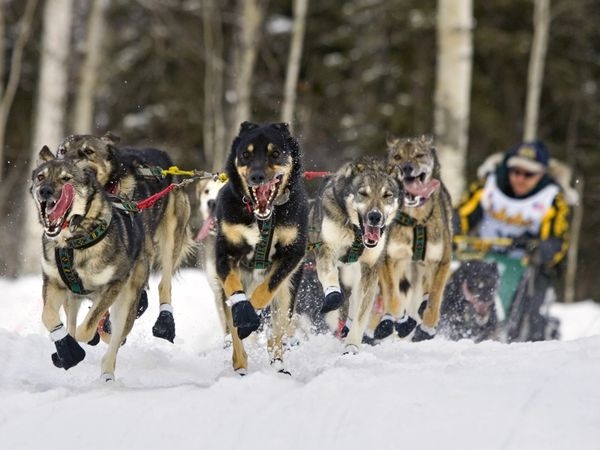
When was the first iditarod race run?
The Iditarod is for DOGsledding.
Nothing to do with horses at all.
It was run to celebrate the sled team led by Balto, who in 1925 made a run from Juneau to Nome, Alaska, bringing lifesaving diptheria medicine to the town's children.


